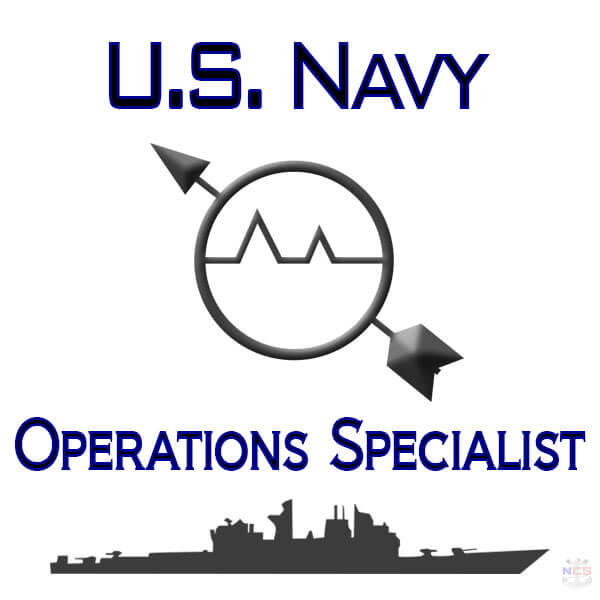The OS Rating

The Radarman rating, first established in 1943, was disestablished in 1971 with the responsibilities delved out to the Electronic Technician, and the newly established, Operations Specialist and Electronic Warfare Technician ratings.
The Navy's computerized personnel system associates the rating name with an alphanumeric Navy Navy Enlisted Manning Code (EMC). For OS, the EMC is B440.
Operations Specialists operate radar, navigation, and communications equipment in combat information centers on the ship's bridge. They detect and track ships, aircraft, and missiles.
Operations Specialist class "A" school is 9 weeks long, and the school is located in Great Lakes, Illinios. The OS rating requires a 60 month (5 year) service obligation.
Operations Specialist job description (B440)
Operations Specialists function as plotters, radio-telephone and Command and Control sound-powered telephone talkers and maintain Combat Information Center (CIC) displays of strategic and tactical information. OSs operate surveillance and altitude radars' Identification Friend or Foe (IFF), and associated equipment. They serve as air traffic controllers for helicopters and fixed-wing supersonic jet aircraft.
OS's serve as watch supervisors and section leaders, and they interpret and evaluate presentations and tactical situations and make recommendations to supervisors during watch conditions. They apply a thorough knowledge of doctrine and procedures applicable to CIC operations contained in U.S. Navy instructions and Allied or U.S. Navy publications and procedures necessary for radar navigation contained in Naval Oceanographic Office publications.
Operations Specialists provide to the command technical information and assistance related to Anti-Surface Warfare, Anti-Air Warfare, Anti-Submarine Warfare, Amphibious Warfare, Mine Warfare, Naval Gunfire Support, and search and rescue operations, and other matters pertaining to the Operations Specialist's area.
Upon completion of the required rating courses, OSs will be able to plot a ship's position, heading, and speed. They operate common marine electronic navigation instruments including radar systems, and provide target plotting data to the combat information center based on information received from target tracking devices.
Career Sea - Shore Rotation Chart
| Rating | SEA1 | SEA2 | SEA3 | SEA4 | SEA/SH |
|---|---|---|---|---|---|
| OS | 54 | 60 | 48 | 48 | 36/36 |
| SH1 | SH2 | SH3 | SH4 | ||
| 36 | 36 | 36 | 36 |
Sea tours and shore tours for Sailors that have completed four sea tours will be 36 months at sea followed by 36 ashore until retirement.
Qualifications, Interests, and Working Environment
Operations Specialists must be U.S. citizens and be able to meet all security clearance requirements. Adversely adjudicated drug abuse offenses will not receive waiver consideration. A good working knowledge of arithmetic, the capability for understanding modern computing devices, the ability to speak and write well and function as a member of an integrated team, do detailed work and keep accurate records, some physical strength and good manual dexterity are important qualifications.
Normal color perception and hearing are required.
Operations Specialists usually work in a clean, air-conditioned electronic equipment space or computer room, and frequently perform their work as part of a team, but may work on individual projects. Their work is mostly mental analysis and problem solving. USN OSs are stationed primarily aboard USN ships, and FTS OSs are stationed aboard Naval Reserve Force (NRF) ships that deploy or conduct local operations. OS ASVAB Test requirement.
Because of the skills and expertise needed by the Operations Specialist, acceptance is limited to highly motivated and qualified applicants. About 8,000 men and women work in the OS rating.
Personnel in this rating are paid allowances (BAH, BAS, etc. if eligible) and billet pay (sea pay, etc. if eligible), and basic pay per years of military service and paygrade.
Credit Recommendations
American Council on Education recommends 5 semester hours credit in the lower division baccalaureate/Associate degree category: 3 semester hours in Marine Navigation and 2 semester hours in marine navigation laboratory.
Page written and maintained by NCCM Thomas Goering, USN (Retired).
If you are seeking information about joining the Navy, feel free to contact me.
